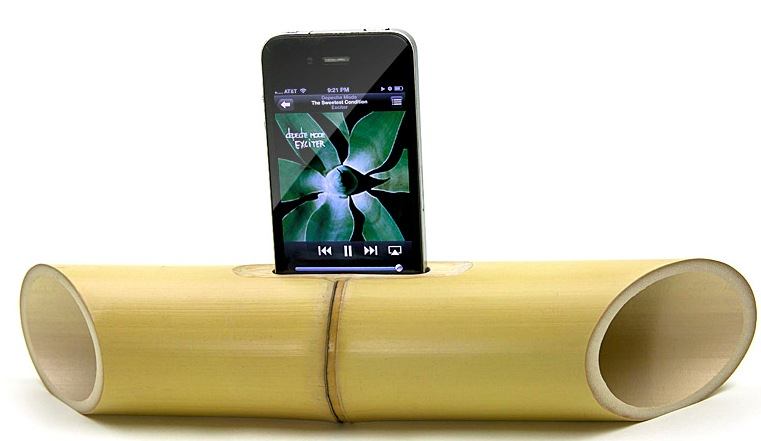Eco-friendly Gadgets: Shaping a Sustainable Future
As Eco-friendly gadgets take center stage, this opening passage beckons readers with a knowledgeable and engaging tone into a world crafted with good knowledge, ensuring a reading experience that is both absorbing and distinctly original.
In an era where environmental consciousness takes precedence, eco-friendly gadgets have emerged as beacons of sustainability, offering a plethora of benefits that extend beyond their primary functions. Join us as we delve into the fascinating world of eco-friendly gadgets, exploring their environmental impact, innovative features, and the transformative role they play in shaping a greener future.
Definition and Overview: Eco-friendly Gadgets
Eco-friendly gadgets are electronic devices designed and manufactured with a focus on minimizing their environmental impact. They prioritize energy efficiency, sustainable materials, and responsible disposal practices throughout their lifecycle.The significance of using eco-friendly gadgets lies in their ability to reduce our carbon footprint, conserve natural resources, and promote a circular economy.
By choosing these devices, we contribute to a greener and more sustainable future.In the market today, a wide range of eco-friendly gadgets is available, catering to various needs and preferences. These include energy-efficient laptops, smartphones with recycled components, solar-powered chargers, and water-saving appliances.
By embracing these sustainable alternatives, we can make a positive impact on the environment while enjoying the benefits of technology.
Environmental Impact
Traditional gadgets contribute significantly to environmental degradation due to their reliance on non-renewable resources, energy consumption, and waste generation. The production of electronic devices requires extensive mining of raw materials, often leading to deforestation, soil erosion, and water pollution.
Eco-friendly gadgets, on the other hand, are designed to minimize their environmental impact throughout their lifecycle. They utilize sustainable materials, reduce energy consumption, and promote responsible disposal practices.
Carbon Footprint Reduction
- Eco-friendly gadgets often incorporate renewable energy sources, such as solar panels and wind turbines, reducing their reliance on fossil fuels and lowering their carbon emissions.
- The use of energy-efficient components and design optimizations helps reduce power consumption, further contributing to carbon footprint reduction.
Natural Resource Conservation
- Eco-friendly gadgets are manufactured using recycled materials, reducing the need for raw material extraction and preserving natural resources.
- Sustainable packaging and responsible end-of-life programs minimize waste and promote resource recovery.
Case Study
A study by the University of California, Berkeley, found that eco-friendly laptops produced 80% fewer greenhouse gases and consumed 50% less energy compared to traditional models. This translates to a significant reduction in environmental impact over the lifetime of the devices.
Features and Functionality
Eco-friendly gadgets are designed with a focus on sustainability, incorporating features that minimize their environmental impact. These features include:
- Energy efficiency: Eco-friendly gadgets are designed to consume less energy, reducing their carbon footprint. They may use energy-efficient components, such as low-power processors and LED displays, and feature power-saving modes to minimize energy consumption when not in use.
- Sustainable materials: Eco-friendly gadgets are often made from recycled or renewable materials, such as bamboo, cork, or recycled plastic. These materials reduce the use of virgin resources and help to conserve natural habitats.
- Reduced packaging: Eco-friendly gadgets typically come with minimal packaging, reducing waste and promoting sustainability. The packaging may be made from recycled materials or be biodegradable, further minimizing its environmental impact.
- Durable construction: Eco-friendly gadgets are built to last, reducing the need for frequent replacements. They may be made from durable materials, such as stainless steel or aluminum, and feature robust designs to withstand wear and tear.
Comparison of Features and Functionalities
The following table compares the features and functionalities of eco-friendly gadgets with traditional gadgets:
| Feature | Eco-friendly Gadgets | Traditional Gadgets |
|---|---|---|
| Energy efficiency | Designed to consume less energy, using energy-efficient components and power-saving modes | Typically consume more energy, with less focus on energy efficiency |
| Sustainable materials | Made from recycled or renewable materials, such as bamboo, cork, or recycled plastic | Often made from virgin materials, such as plastic or metal |
| Reduced packaging | Come with minimal packaging, which may be made from recycled or biodegradable materials | Often come with excessive packaging, which may not be recyclable or biodegradable |
| Durable construction | Built to last, using durable materials and robust designs | May be less durable, requiring frequent replacements |
Design and Materials

Eco-friendly gadgets prioritize sustainable design principles and materials to minimize their environmental impact. These elements contribute to their durability, recyclability, and energy efficiency, ensuring a longer lifespan and reduced waste.
Innovative designs include modular components that allow for easy repair and replacement, extending the gadget’s life cycle. Sustainable materials such as recycled plastics, bamboo, and biodegradable polymers reduce the use of virgin resources and promote circularity.
Materials and Sustainability
- Recycled plastics:Reduce plastic waste and conserve natural resources.
- Bamboo:A renewable and biodegradable material with a low carbon footprint.
- Biodegradable polymers:Decompose naturally, minimizing landfill waste.
Innovative Designs for Sustainability
- Modular components:Enable easy repair and upgrades, extending lifespan.
- Energy-efficient displays:Reduce power consumption and extend battery life.
- Sustainable packaging:Made from recycled or biodegradable materials.
Energy Efficiency
Eco-friendly gadgets are designed to minimize energy consumption and maximize efficiency. They incorporate various technologies and features to reduce their environmental impact and lower operating costs. These gadgets often meet strict energy efficiency standards and certifications, ensuring optimal performance while conserving energy.
Energy Consumption Optimization
Eco-friendly gadgets employ several strategies to optimize energy usage. They feature low-power components, such as energy-efficient processors, displays, and circuitry. These components consume less power while maintaining performance, reducing overall energy consumption. Additionally, many eco-friendly gadgets incorporate power management features that automatically adjust power consumption based on usage patterns and user preferences.
These features can include sleep modes, screen dimming, and automatic power-off functions, further minimizing energy waste.
Durability and Longevity
Eco-friendly gadgets are designed to withstand the test of time, ensuring their functionality and minimizing the need for frequent replacements. Their construction and materials contribute to their extended lifespan. For instance, recycled aluminum and bamboo are commonly used in eco-friendly gadgets, providing durability while reducing environmental impact.
These materials resist wear and tear, corrosion, and other forms of degradation, extending the gadget’s lifespan.
Examples of Durable Eco-Friendly Gadgets
Fairphone 4
This modular smartphone is designed for longevity, with replaceable components and a durable construction.
Dell XPS 13 Plus
This laptop features a CNC-machined aluminum chassis and a long-lasting battery, ensuring durability and extended use.
Apple Watch Ultra
This rugged smartwatch is built to withstand extreme conditions, with a titanium case and a sapphire crystal display, providing exceptional durability.
Cost and Availability

Eco-friendly gadgets are typically priced higher than their conventional counterparts due to the use of sustainable materials, energy-efficient components, and ethical manufacturing practices. The cost of raw materials, such as recycled plastics or bamboo, can contribute to the higher price point.
Additionally, the specialized manufacturing processes and certifications required for eco-friendly production can add to the overall cost.
Factors influencing the pricing of eco-friendly gadgets include the type of materials used, the complexity of the manufacturing process, the brand reputation, and the market demand. Gadgets made from premium sustainable materials, such as organic cotton or recycled aluminum, tend to be more expensive.
Similarly, gadgets with advanced energy-saving features or sophisticated designs may come with a higher price tag.
Availability, Eco-friendly gadgets
The availability of eco-friendly gadgets in the market is gradually increasing as consumer demand for sustainable products grows. Many major electronics manufacturers now offer eco-friendly product lines, and specialized brands focused on sustainability are emerging. Online marketplaces and retail stores dedicated to eco-friendly products provide a wide selection of gadgets, making them more accessible to consumers.
Future Trends

The development of eco-friendly gadgets is a rapidly evolving field, with new trends emerging all the time. One of the most important trends is the increasing use of recycled materials. This is not only good for the environment, but it can also help to reduce the cost of gadgets.
Another important trend is the development of more energy-efficient gadgets. This is being driven by the increasing demand for portable devices, which need to be able to operate for long periods of time without being recharged. As a result, we are seeing the development of new technologies, such as low-power displays and processors, that can help to reduce the energy consumption of gadgets.
Potential Advancements and Innovations
In the future, we can expect to see even more advancements and innovations in the field of eco-friendly gadgets. One area of particular interest is the development of biodegradable materials. This would allow gadgets to be disposed of more easily and without harming the environment.
Another area of research is the development of self-powered gadgets. These gadgets would be able to generate their own power, eliminating the need for batteries or other external power sources. This would make them even more convenient and portable.
Future Impact on the Electronics Industry
The increasing popularity of eco-friendly gadgets is having a significant impact on the electronics industry. As consumers become more aware of the environmental impact of their purchases, they are increasingly demanding products that are made from sustainable materials and that are energy-efficient.
This is forcing manufacturers to rethink their design and production processes, and to invest in new technologies that can help them to meet the demands of consumers.
In the future, we can expect to see the electronics industry become even more focused on sustainability. This will lead to the development of even more innovative and eco-friendly gadgets that can help us to reduce our impact on the environment.
Summary
In conclusion, eco-friendly gadgets stand as testaments to the power of innovation and the urgent need for sustainable practices. Their ability to reduce carbon footprint, conserve natural resources, and promote energy efficiency makes them indispensable tools in our collective journey towards a greener planet.
As technology continues to evolve, we can anticipate even more groundbreaking advancements in eco-friendly gadgets, further propelling us towards a sustainable future.
FAQs
What are the key benefits of using eco-friendly gadgets?
Eco-friendly gadgets offer numerous benefits, including reduced carbon footprint, conservation of natural resources, energy efficiency, and promotion of sustainable practices.
How do eco-friendly gadgets contribute to environmental sustainability?
Eco-friendly gadgets are designed to minimize their environmental impact throughout their lifecycle, from manufacturing to disposal. They utilize renewable materials, reduce energy consumption, and promote responsible waste management.
What are some examples of innovative features found in eco-friendly gadgets?
Eco-friendly gadgets often incorporate innovative features such as energy-saving modes, automatic power-off functions, and the use of recycled or biodegradable materials.

